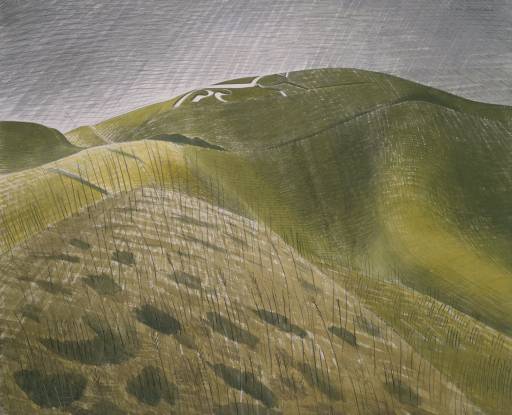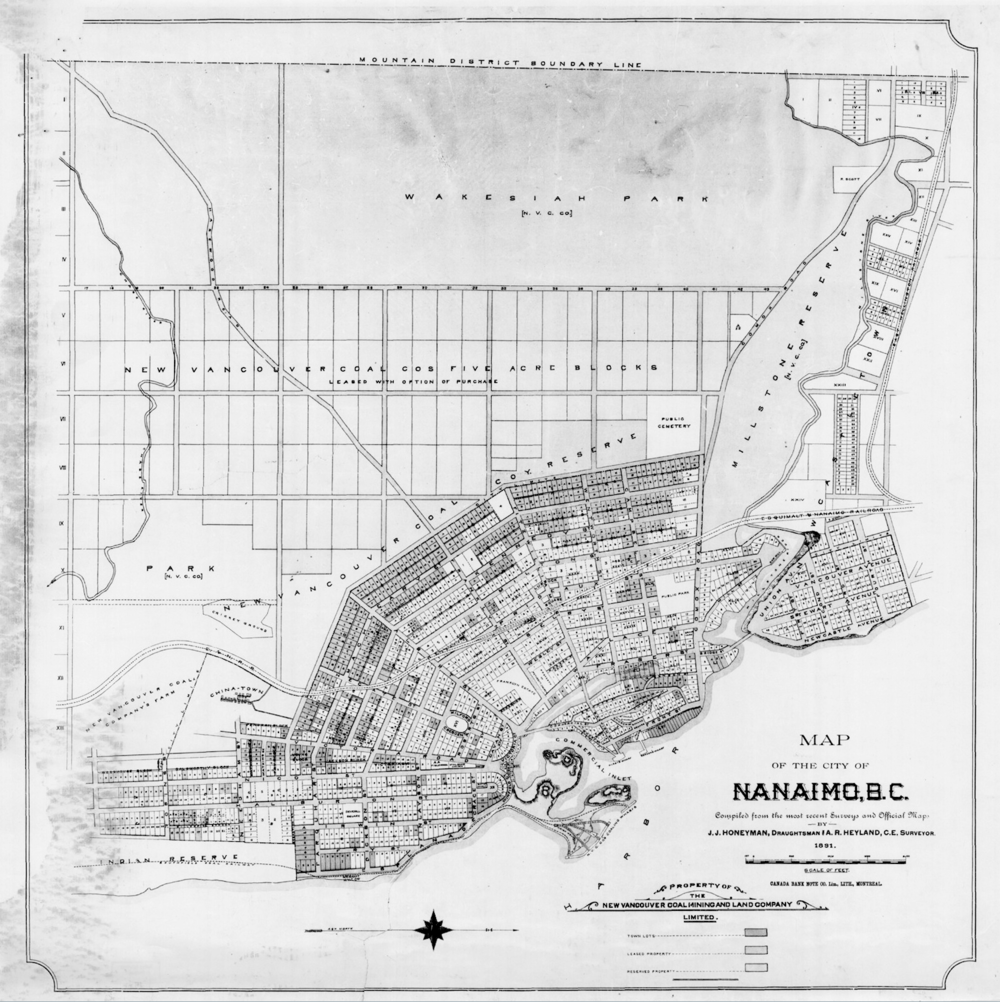coal mining towns
 Eric Ravilious. The Vale of the White Horse, circa 1939. Pencil and watercolour on paper: 451 x 324 mm Tate Collection N05164. This cutting of small villages into the landscape, especially in the L S Lowry painting (of yesterday's post) where in the front of the village are some fenced off yards as stony as can be, brings to mind the 3000 year-old Uffington White Horse cut into the Berkshire Downs. These are inscriptions in the landscape, rather than sprawls across its surface.
Eric Ravilious. The Vale of the White Horse, circa 1939. Pencil and watercolour on paper: 451 x 324 mm Tate Collection N05164. This cutting of small villages into the landscape, especially in the L S Lowry painting (of yesterday's post) where in the front of the village are some fenced off yards as stony as can be, brings to mind the 3000 year-old Uffington White Horse cut into the Berkshire Downs. These are inscriptions in the landscape, rather than sprawls across its surface.
Nanaimo, which today sprawls determinedly north and west up the mountain, was originally a coal mining town, incised in the woods as a tidy fan-shaped diagram around the harbour. You can see it drawing from the British colliery typology: small compact houses in small compact towns. One can already see, in the 1891 map, new development inching northward. In 1891, 762 working men lived in the south end; 70% were miners.
They are almost gone, but Nicol Street (now the Island Highway going south) until fairly recently was lined with tiny miners' houses, no bigger than two rooms. It was a rough place, early Nanaimo, very unlike its present prosperous and prolific self.

